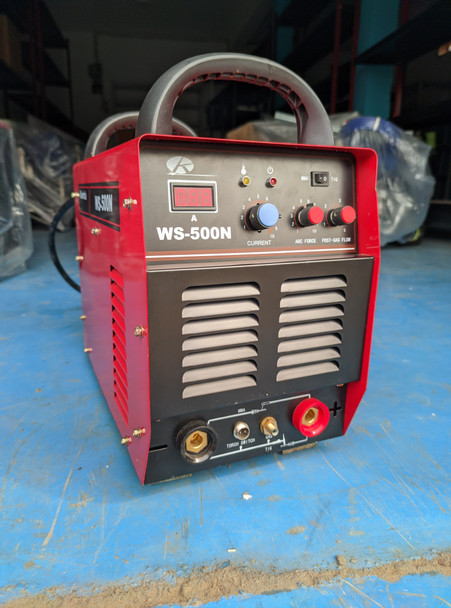Understanding Metal Properties and Their Impact on Welding Success
- Specific Metal Characteristics Matter: Each metal's unique properties such as thermal conductivity, melting point, and thermal expansion directly influence welding strategy and success.
- Tailored Welding Techniques: Effective welding requires adjusting techniques and parameters like heat input and speed to match the specific properties of the metal being welded.
- Preparation is Key: Proper preparation of metal surfaces, considering their properties, is crucial to prevent defects and ensure strong, clean welds.
- Enhanced Outcome Efficiency: By aligning welding methods with metal properties, welders can achieve more efficient and reliable results, reducing waste and rework.
- Longevity of Welds: Understanding and accommodating metal properties in the welding process enhances the durability and integrity of the welds, ensuring they last longer and perform better under stress.
Introduction
Understanding the properties of metals is fundamental to achieving success in welding projects. The characteristics of the metal not only influence the choice of welding techniques but also affect the quality and durability of the welds. Knowledge of metal properties ensures welders can predict how metals will react under heat and choose the optimal approach to avoid common issues like warping or weak joints.
In welding, several metals are predominantly used due to their mechanical properties and availability. These include steel, aluminum, titanium, and copper, each presenting unique challenges and requiring specific techniques for effective welding.
 Maxmech Inverter Welding Machine TIG/MMA-400: Achieve precise welds on thin metals
Maxmech Inverter Welding Machine TIG/MMA-400: Achieve precise welds on thin metals
Fundamental Properties of Metals in Welding
1. Thermal Conductivity
Thermal conductivity is a measure of a metal's ability to conduct heat. Metals like aluminum have high thermal conductivity, which means they heat up and cool down quickly. This trait requires welders to use higher energy outputs to maintain the necessary temperature for creating strong welds, influencing the choice of welding settings and equipment.
2. Melting Point
The melting point of a metal is the temperature at which it changes from solid to liquid. Understanding melting points is crucial because welding generally involves melting the metals to be joined. For instance, steel has a higher melting point than aluminum, necessitating different heat settings during welding to ensure proper fusion without damaging the material.
3. Thermal Expansion
When metals are heated during the welding process, they expand, and upon cooling, they contract. This expansion and contraction can lead to stress and distortion if not properly managed. Knowing how much a metal expands can help in planning the weld sequence and placements to minimize these effects, especially in complex fabrications.
 Hellog Welding Oxygen MAPP gas Cylinder Torch Kit: Reach High-Temperatures ideal for brazing, soldering and even cutting applications.
Hellog Welding Oxygen MAPP gas Cylinder Torch Kit: Reach High-Temperatures ideal for brazing, soldering and even cutting applications.
Specific Metals and Their Welding Characteristics
1. Steel
Overview: Steel, including its sub-types like carbon steel, stainless steel, and alloy steel, is one of the most commonly welded materials due to its strength and versatility.
Welding Characteristics: Carbon steel is relatively straightforward to weld and does not require pre-weld heating, but stainless steel and alloy steels may need specific heat control to prevent warping and maintain corrosion resistance.
2. Aluminum
Challenges: Aluminum poses specific challenges in welding due to its high thermal conductivity and susceptibility to oxidation.
Techniques: Use of higher amperage and AC output on TIG machines is common when welding aluminum to address its quick heat dissipation and to break up the oxide layer that forms on its surface.
3. Titanium
Properties: Known for its strength, light weight, and resistance to corrosion, titanium is a premium welding material.
Welding Environment: Titanium must be welded in an inert atmosphere, typically using argon shielding gas, to prevent contamination that can lead to embrittlement.
4. Other Metals
Copper and Nickel Alloys: These metals require careful heat control and often preheating because they can rapidly lose strength at high temperatures and are prone to warping.
Influence of Metal Properties on Welding Techniques
1. Choosing the Right Welding Method
Method Selection: The choice of welding method (MIG, TIG, Stick) largely depends on the type of metal and the specific properties discussed earlier. For example, TIG is preferred for metals requiring precise heat control like aluminum and titanium.
2. Adjustments in Welding Parameters
Parameter Adjustments: Depending on the metal type, adjustments may need to be made in terms of power settings, speed, and even the type of electrode or filler material used to accommodate different melting points and conductivity.
3. Preparing Metals for Welding
. Surface Preparation
Cleaning and Coating Removal: Proper surface preparation is critical, especially for metals like aluminum, which may have an oxide layer or oils that can affect weld quality. Techniques such as brushing, grinding, or using chemical solvents are employed to clean and prepare the surfaces.
. Heat Treatment
Pre and Post-Weld Heat Treatment: Certain metals, like high-carbon steels and titanium, benefit from heat treatments both before and after welding. These treatments are used to reduce residual stresses and enhance the mechanical properties of the weld.
 YAWATA 7018 Arc Welding Electrode: Reliable Welding for High-Strength Steel Projects.
YAWATA 7018 Arc Welding Electrode: Reliable Welding for High-Strength Steel Projects.
Problem Solving and Troubleshooting
Common Welding Issues by Metal Type
Steel: Common issues include porosity and spatter. Using clean, dry shielding gas and appropriate amperage settings can help mitigate these problems.
Aluminum: Cracking and porosity are frequent challenges. Employing a clean surface, correct filler material, and preheating can reduce these issues.
Titanium: Sensitivity to contamination requires a strictly controlled environment. Ensuring no air or moisture contamination during welding is crucial.
Tips for Improving Weld Quality
Technique Refinement: Perfect your technique by maintaining a consistent travel speed and angle.
Equipment Maintenance: Regularly maintain your welding equipment for consistent performance, focusing on keeping components clean and in good repair.
Skill Development: Continuously learning and practicing new welding techniques can improve your adaptability and problem-solving skills in handling different metals.
 Kaierda Tig Welding machine WS500N: Take on Demanding Jobs with relative ease
Kaierda Tig Welding machine WS500N: Take on Demanding Jobs with relative ease
Further Reading and Resources
The Role of Welding in Modern Construction and Manufacturing
Understanding Welding Consumables: A Beginner's Guide
Frequently asked questions
1.What is the best way to determine the correct welding parameters for a specific metal?
Refer to welding guides or manufacturer’s recommendations and consider metal type, thickness, and welding position.
2. How often should welding equipment be serviced?
Service intervals can vary based on usage but generally, inspect and perform maintenance on welding equipment every six months or after major projects.
3. Can welding techniques learned on one type of metal be applied to another?
While fundamental techniques may be similar, adjustments are often required to accommodate different physical and chemical properties of metals.
4. What are the safety essentials every welder should follow?
Always wear appropriate personal protective equipment, ensure proper ventilation, and follow safety protocols for handling and disposing of hazardous materials.
5. Where can I find professional welding services in Mangoro, Ikeja, Lagos?
For professional and reliable welding and fabrication services, visit GZ Industrial Supplies online at https://gz-supplies.com. Explore our range of services and get expert support for your next project.
Conclusion
This guide has explored how different metal properties influence the choice of welding techniques and parameters, the importance of proper metal preparation, and strategies for overcoming common welding challenges. Understanding these aspects is vital for successful welding projects.The field of welding is continually evolving, with new technologies and materials constantly emerging. Stay informed on the latest developments and continue honing your skills to remain competitive in the industry.
Do you have a specific welding project in mind and need expert advice on choosing the right technique for the metals involved? Contact Us today for a free consultation!












